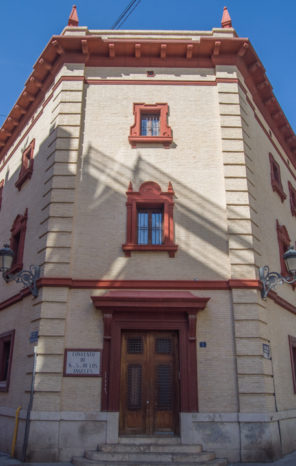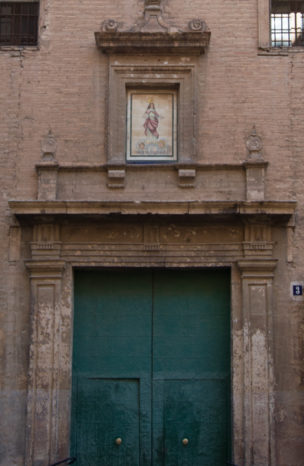Nuestra Señora de los Ángeles Convent
The Nuestra Señora de los Ángeles Convent is one of the religious monuments with historical nuances of the city of Valencia. On April 22, 1238, James I of Aragon set up camp in Ruzafa, to besiege the city of Valencia; on September 14 he began talks with Zayán, Moorish king of Valencia, culminating in the surrender of Valencia on the 29th of the same month, signing this surrender in the place occupied today by this convent. King James I and his army made their entry into Valencia on October 9. A plaque commemorating this historic event can be seen on its main façade.
Located today in one of the most central neighborhoods of the city of Valencia, it was founded in 1661, by the then Archbishop of Valencia, Don Martín López Ontiveros, on what was originally the recreation and recreation estate of Abal Allah al Balansi (-823), outside the city walls. Thus, on January 11, 1661, work began on the convent’s factory, and the six nuns who left the Convent of Jerusalem outside the walls of Valencia were provisionally installed on August 2, the feast day of the Virgin of the Angels. In 1699 the church was completed, and in it is buried, by personal desire, the founder of the convent, on whose slab he reads: “Hic jacet Martinus de Ontiveros indignus Archiepiscopus Valentinus Filii Orate pro em“.
The monastery, erected under the observance of the First Rule of Santa Clara according to the Constitutions of the reform of Santa Coleta, still retains the spirit of its origin today. The convent is an irregular quadrilateral that embraces the temple, with an exterior façade of exposed brick and openings with Baroque split pediment and topped with balls and pyramids. The church is preserved almost intact, and is one of the best preserved and least known religious buildings in Valencia. Inside, the Ionic order structures a Latin cross plan on which rests a dome on shells. Both the arms of the transept and chancel are covered with barrel vaults, the remaining section being and the high barrel choir with lunettes. The chapels of Saint Anthony of Padua and the Dormition of the Virgin stand out, in which a small rococo style image is preserved, and at the ends of the transept the Virgin of the Forsaken and San José are venerated. Worse luck ran the high altar of the church, now gone.
It was a gilded wooden altar of two bodies of Corinthian order and Kestrel decoration, which was replaced, after the Civil War, by the paintings of Cardells. Of great artistic wealth, the convent stands out for its decorations in the vaults of the church, in which the compositional models taken by Vicente López and the echo of the beauty and colour of the figures of Luca Giordano are evident. However, we cannot fail to highlight the portrait of Mother Sister María Tomás de Villanueva, a work by Vicente López, in which she is represented already in years, with pen in hand, suspended in the air, in the manner of the iconography of Teresa of Avila. Also noteworthy is the collection of funeral writings and prayers for the funerals of the venerable nuns, especially those of the funeral rides of Sister Mary of Santa Clara, pronounced by Fr. Joaquín Llansol and the moral ascetic treatise written by Sister María de Santo Tomás de Villanueva, which were engraved according to drawings by Vicente López.


Dades bàsiques
Calle del Músic Padilla, 5
46005 Valencia